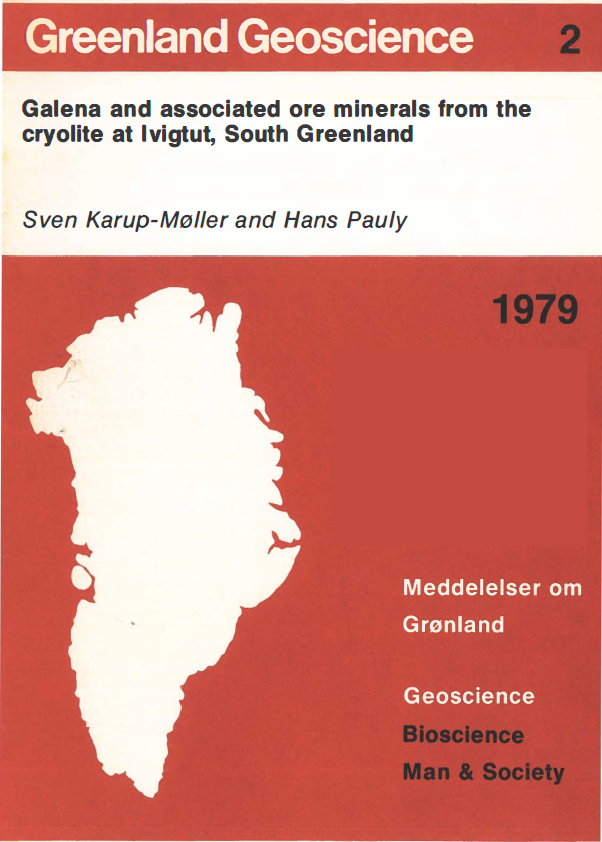Galena and associated ore minerals from the cryolite at Ivigtut, South Greenland
DOI:
https://doi.org/10.7146/moggeosci.v2i.141353Abstract
Silver- and bismuth-rich galena concentrates have been produced for more than 70 years as a byproduct in the dressing of the crude cryolite from lvigtut, South Greenland.
Concentrates from the years 1937 to 1962 contained from 0.44 % Ag and 0. 74 % Bi to 0.94 % Ag and 1.93 % Bi. Conspicuous increases in the content of these elements appeared twice within this time interval, namely in 1955 and in 1960. Thus it seems that crude cryolite from specific areas within the mine carried galena high in silver and bismuth. This promoted a detailed study of the common lvigtut galena and associated sulphides.
An outline of the geological setting of the deposit is given. The deposit is divided into two main bodies - the cryolite body and ihe quartz body. Both are subdivided into units characterized by their content of siderite and fluorite . Galena samples from these units and from rock types surrounding the deposit have been studied.
Galena from units characterized by siderite follows the compositional pattern found in the galena concentrates, whereas the sparse galena mineralizations from units characterized by fluorite contain much smaller amounts of silver and bismuth, less than 0.2 %. However, within the fluorite-bearing units, two peculiar parageneses reveal high contents of silver and bismuth expressed by the presence of particular minerals such as matildite-aikinite and gustavite-cosalite respectively.
Further trace element studies on selected galena samples emphasize Sn and Te as chemically characteristic of the galena and of the sulphide-carbonate phase of the deposit.
The temperature of formation of the main part of the deposit is placed at 550-400°C, and between 300 and 200°C for certain parts of the fluorite cryolite and the fluorite zone.

Downloads
Published
How to Cite
Issue
Section
License
Coypyright by the authors and the Commision for Scientific Research in Greenland / Danish Polar Center. No parts of the publications may be reproduced in any form without the written permission by the copyright owners.

